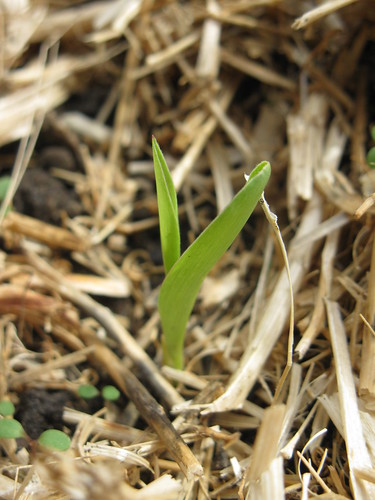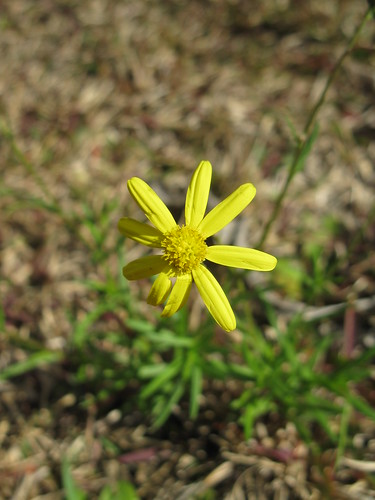[DIEGO]
There are lots of special things that enrich your day when gardening.
They mostly relate to the relationship between time and change.
Things grow, change through time, and to witness the slow unfolding of change demystify stiff solutions, defined resolutions.
When things change they do so by transporting whatever they are into new things, new being, new paradigms.
Resilience, validity, transformation, are all part of time+change.
Tending is growing, the plants in it are growing, the people around it are growing, in number and interest.
I love the little bushes of fireweed (Senecio spp), a plant no one planted, but because we are here ‘managing’ the grounds, they had the chance to grow: they would have been mowed otherwise.
So this little clusters of bright yellow flowers found a sanctuary. They are declared noxious weeds in many parts of the east coast, illegal being, not even refugees, outcasts rather.
I’m writing this from a place where fireweed is heavily legislated upon, on a property 3 hours south of Sydney, see here, and yesterday we had a presentation from Maarteen Stapper, a Biological agronomist, who amongst other things said that the current shortsighted legislation around ‘weeds’ miss the point. Plants grow to heal the soil, and if you rather have more complex plant structures growing in your fields then you should take a hint from what is growing, because it tells you the deficiency in the soil, no point to poison the plant, actually you shouldn’t at all, but rather leave them, the pioneer flora will slowly remediate the soil structure. If you don’t want to wait, he said, then look at the telling signs the weed is providing: Fleabane (conyza) say the soil needs aeration, Nettle (urtica) says the soil is too rich in calcium, Thistles too much potassium ( i seem to remember..) and so forth. Fix the deficiency, facilitate a healthy ecosystem of bacteria and microorganism below the ground. That is not done with chemical fertilizers.
So the garden grows, and so the interest and we slowly witnessing an overgrowing participation.
Betty is spearheading her own patch, she already enlisted the help of a number of students, soon to come.
come down, watch it grow, by slow interaction of living organisms.



ah, it’s amazing how being away from sydney changes everything – even your (digital) tone of voice, diego!
maybe when you head back up from bundanon you could bring some nettles with you? remember the soil scientist recommended we plant a bunch of them?
xL
indeed i can, but would be easier to pick ’em up from the local Callan’s supply.
Have a look at the soup we made here BTW
http://www.weedyconnection.com/blog/2010/09/21/nettle-soup/
green cheers!
hi there from sams creek- far south coast NSW
I was intrigued by your comments about fireweed (Senecio madagascariensis) – as I live on a large property in the Bega Valley shire – where fireweed is an avowed and a-feared weed – it’s poisonous (containing pyrrolizidine alkaloids) causes all sorts of nastiness in livestock and humans (weight loss, jaundice, fluid in the lungs, blindness, sudden death without any other indications, aimless wandering, muscular coordination, twitching of the head muscles, abdominal straining, rectal prolapse, and irritability) and is on the Cat. 4 declared weeds list which in our shire means:
(from the BVSC fireweed fact sheet…. and believe me they mean it!)
I can understand advocacy for understanding the role and potential for some so called ‘weeds’ in natural and agricultural ecosystems (nettles are yummy!) – but fireweed is in a very very very different category…. fireweed out-competes both agricultural pasturelands (rendering them unusable), and native vegetation (it’s toxins also affect native wildlife). It is devastating huge swathes of both farmland and national parks in this region.
I’d love to hear some of Maarteens thoughts regarding this nasty little bugger…..
ps – love your project…..
Thanks for your comment Ronnie, you are voicing the concerns of a lot of farmers and pointing at the resolution of the Primary Industries Department.
Dr. Marten Strapper consider fireweed on the same ground (literally) of many other ‘unwanted species’ in yours and others properties: it is a telling tales of the condition of the pastures.
You know yourself that the ‘traditional’ ways of cultivating land into palatable grasses impoverish the soil, fireweed take hold where the preferred species fail to compete. The solution lays in fostering a healthy topsoil, where the preferred species would find plenty of constant nutrients so that would not be disadvantaged by other plants.
The use of herbicides are the worst thing you could do, as they do kill the plant, yes, but also the organic composition of the soil beneath it, and the microorganisms that guarantee a healthy soil.
Fireweed , as a pioneer plant, is remediating the impoverished soil, to then prepare for the higher species to re-enter the ecosystem when the balance is been achieved.
All pioneer specie have a clear role in the ecosystem, unfortunately modern agriculture does not oblige to the same timeframes, and neither do the councils and various law makers in the DPI.
Dr Stapper might provide a more environmentally-sensitive solution to your economic imperatives via organic remediation.
I tend to pose ethical questions on the state of our current natural resources management.
It is unfortunate fireweed is poisonous to livestock and humans, it is also unfortunate that we human have been poisoning the environment and ourselves for so long.
thanks Ronnie
This isn’t a fully formed argument but some thoughts that occur to me around this question of what-is-a-weed and how-do-we-treat-it.
Diego, in the way you talk about weeds there is always a metaphorical connection made to human immigration and illegality. In the metaphor that you set up the humans are playing the part of enforcers and gate-keepers, the plants are both downtrodden “outcasts” and brave, plucky “pioneers”, as in this sentence where you say that due to your “management” of the garden the fireweed’s “little clusters of bright yellow flowers found a sanctuary. They are declared noxious weeds in many parts of the east coast, illegal being, not even refugees, outcasts rather.”
Whilst thinking about the paralells between human immigration and plants is interesting. I think the way you use these metaphors is sometimes counterproductive. Anthropomorphising the plants leads to a kind of emotive, moral argument based on an idea of conscious intention that steamrollers scientific, empircal and other kinds of information. For example, the statement “plants grow to heal the soil” seems to be the most important part of your argument, and not really backed up by any evidence or reason. It suggests plants have a positive *intention*. You could just as easily say “plants grow to overrun weaker plants”, or “plants grow to kill cattle who eat them”.
Surely it cannot be the case that fireweed ONLY flourishes in poor soil, that it takes root with the intention of improving the soil and will ONLY stay until a “higher species” can replace it. If it really is this poisonous you surely don’t want it growing in an urban community garden… Is the only ethical human action in this case really to cultivate topsoil and wait?
Brilliant!, thank you Lizzie, we’re going somewhere here, contextualizing a simple bush into a wider spectrum of ethics and metaphorical interpretations.
I will come back and answer more thoroughly to your comments in a second stage, but for now I just wanted to stick a couple of links here to set the ground for my position (which by no means is cemented, on the contrary, i question myself as much as i question others points of view).
First link is about ecological succession, a theory (proved by data) developed through the centuries of ecological studies, see the wikipedia entry here>http://en.wikipedia.org/wiki/Ecological_succession
another link i would like to add to this discussion points at the work of french philosopher Michel Serres, who argues the need for a new way to acknowledge the environment, allowing for it to be recognized as a legal entity. In my metaphors i do anthropomorphising nature, yes, in a conscious attempt to bring it at the level of respect we modern human oblige, the legal respect. Here (http://www.ctheory.net/articles.aspx?id=515 ) you will find a translation from Serres writings, and here a quote:
“My book argues that this Declaration (Declaration of the Rights of Man and the Citizen *ndr) is not yet universal as long as it does not determine that all living beings and all inert objects, in short, all of Nature have in turn become legal subjects.”
Diego, sorry to say that this little one got swept up in the energetic install of the Betty bed today!
For starters it seemed poised just on the western border, but later I noticed it had been reefed up. Now it’s tucked into the base layer of the bed and will hopefully do good work that way… Lisa x
Does anyone know what the best soil fertility program is for overcoming Fireweed in grass pastures? I live in Hawaii and this is a big concern. My thought is to soil test and follow a modified Albrecht program. Any help/insights will be appreciated.
Aloha!
Thanks so much for your question Jana.
I have posted your enquiery in a Facebook grorp as well, see what we can gather:
http://www.facebook.com/pages/weedbook-Sydney/113858111997291
Regards
So Jana, so far no replies came from y call out, so I will give my two cents worth:
my first response would be that an assesment of the chemical composition of the soil might just say what fireweed is saying already. I quote here a biological farming adviser, Marteen Strapper, who argues for a farming method which do not rely on ‘crass’ mineral imported in the soil, but rather allow the soil to find its balanced fertility via fostering a healthy microculture in the soil.
http://drmaartenstapper.com.au/
Hope it helps, would love to know what you find out in your search
Regards